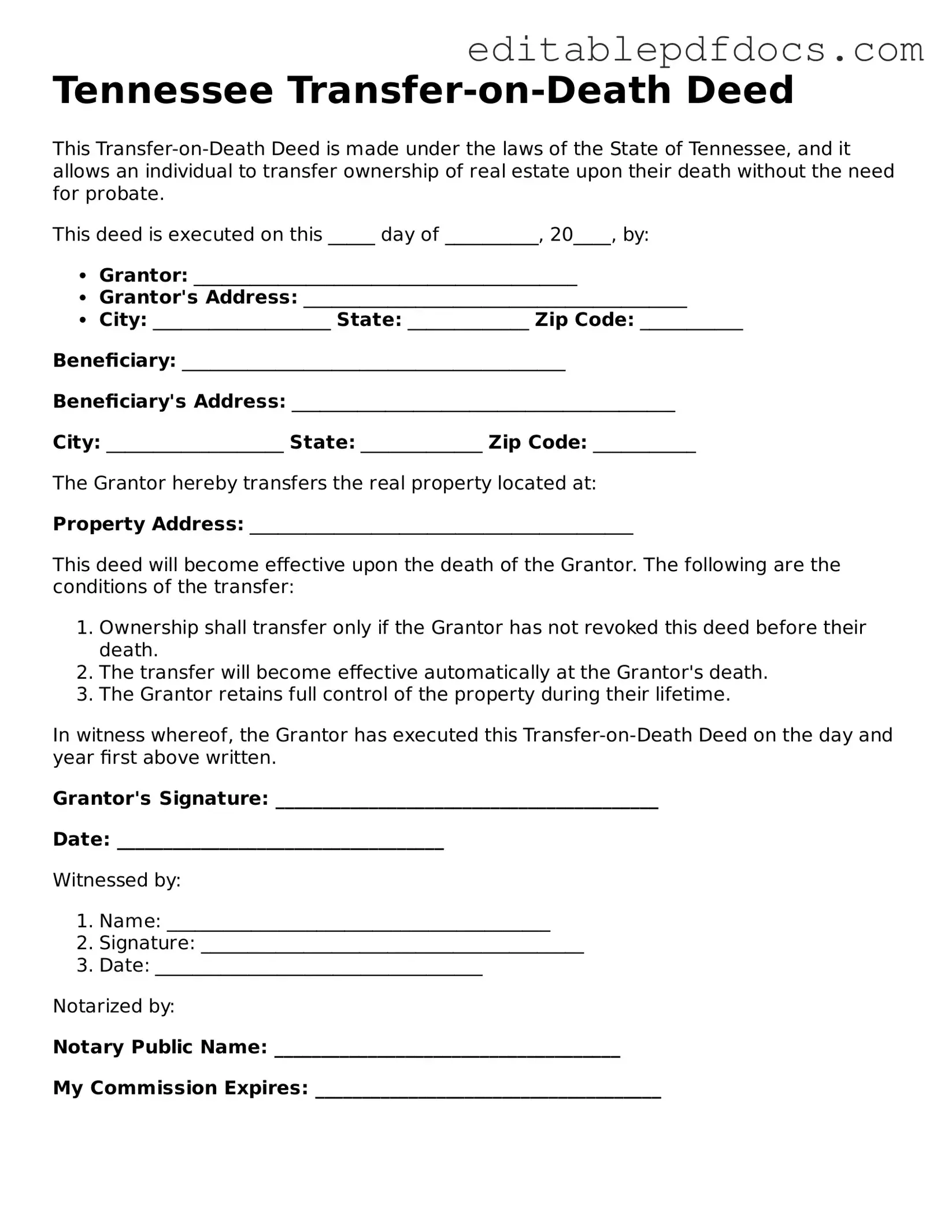Filling out a Transfer-on-Death (TOD) Deed in Tennessee can be a straightforward process, but many people make common mistakes that can lead to complications later on. Understanding these pitfalls can help ensure that your intentions are properly documented and that your property transfers smoothly upon your passing.
One frequent mistake is failing to include the correct legal description of the property. It’s essential to use the exact language found in the property’s deed. Without this information, the transfer may be challenged or deemed invalid, leaving your heirs in a difficult situation.
Another common error is neglecting to sign the deed in the presence of a notary public. In Tennessee, the TOD deed must be notarized to be legally binding. If this step is skipped, the deed may not hold up in court, potentially causing significant delays in the transfer process.
Many people also overlook the importance of naming beneficiaries clearly. If the beneficiary is not specified or if there are ambiguities in naming them, it can lead to disputes among family members. Ensure that names are spelled correctly and that you clearly indicate who will inherit the property.
Some individuals mistakenly believe that a TOD deed can be revoked or changed easily after it has been recorded. While it is possible to revoke or modify a TOD deed, the process requires specific steps, including filing a new deed. Not understanding this can lead to unintended consequences.
Additionally, failing to consider the implications of joint ownership can be problematic. If you own the property jointly with someone else, the TOD deed may not work as intended. It’s crucial to understand how joint ownership affects the transfer of property and to plan accordingly.
Another mistake is not discussing the TOD deed with family members. Open communication about your intentions can help prevent misunderstandings and conflicts after your passing. Family discussions can clarify your wishes and ensure that everyone is on the same page.
Some people forget to check for existing liens or debts on the property before completing the deed. If there are outstanding obligations, those may need to be addressed before the property can be transferred. Ignoring this can create complications for your beneficiaries.
Failing to keep a copy of the completed and notarized deed in a safe place is another oversight. It’s important for your beneficiaries to know where to find the deed when the time comes. Without access to the deed, they may struggle to execute your wishes.
Lastly, many individuals do not consult with a legal professional when filling out the TOD deed. While it may seem straightforward, having an expert review your form can help catch mistakes and ensure that everything is in order. Legal advice can provide peace of mind and protect your interests.
